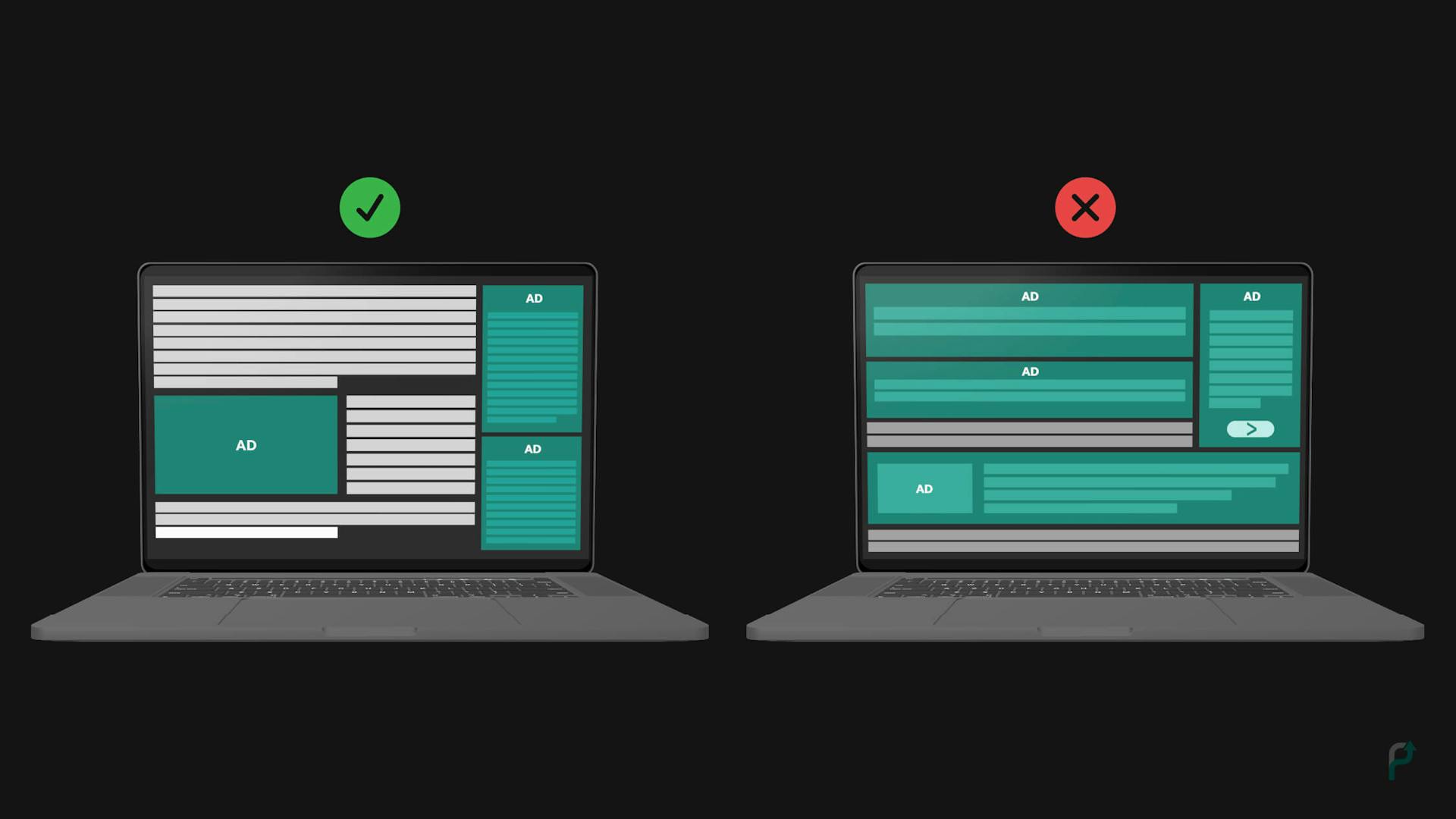Back to Policies
Multiple ads on a single page

What is multiple ads on a single page
While apps and websites are expected to have more publisher content, too many ads or promotional content placed on a single web page or app screen lead to a Google policy violation. Publisher content may include images, text, videos, games, and user-generated content, but does not include header and footer content, internal links, and whitespaces.
The violation mainly happens for the reason that it negatively impacts the user experience, which may drive them away from your app or website. When users see more ads than web or app content
- It may come in the way of navigation from one page to another.
- It may distract them from viewing the real content.
- It may interrupt the user’s journey across the website or app.
Google AdSense violation
Google AdSense’s maximum number of ads per page was three, but the policy was abolished in mid-2016. Even though there is currently no limit on the number of ads you can show on a single web page, it is important to comply with the general user experience standards.
Google AdMob violation
Similar to AdSense, there is no ad limit per page, but AdMob expects the app content to be more than the number of ads. Look at the examples below to understand better.
How it looks
Below are some examples of incorrect implementation of ads on a website, i.e., the number of ads is more than the amount of publisher content.

Here are some examples of the said policy violation on apps.

What are its consequences
You may face the following issues due to the violation:
- Google may flag your website or app under the violation of bad user experience.
- Your website or app may be blocked from receiving ads.
- Google may suspend or terminate your AdMob or AdSense account.
How to avoid it
Even though multiple ad units may optimize your performance, it is essential to give value to users rather than just focusing on monetization. Despite Google not specifying the minimum or maximum number of ads to have on a web page or app screen, you must ensure that the ads do not exceed the real content.
Below are some tips you can follow to balance the content and ads.
- Instead of placing multiple ad units on a page, you can use a combination of link units, ad units, and search boxes on each page.
- Avoid promoting multiple offers in a single placement.
- Use the page layout and article length to determine the number of ads to display. For example, try placing at most five ads on a page with short content, as having more ads may result in high bounce rates.
Below is an example of a balanced page.
 Example of a balanced page
Example of a balanced pageHow we help you resolve policy violations
Our dedicated account managers look into your app and website to identify any policy violations.
We suggest ad formats and placements that may perform best according to your app or website’s UI and UX.
If policy violations are detected, we provide suggestions and help you resolve them to ensure that monetization is not hindered.
We do a thorough audit on a regular basis to avoid policy violations and stalled revenue growth.

The only ad platform built for developers by developers.
Contact us now for a product that fits your needs! It’s quick, simple and easy.



